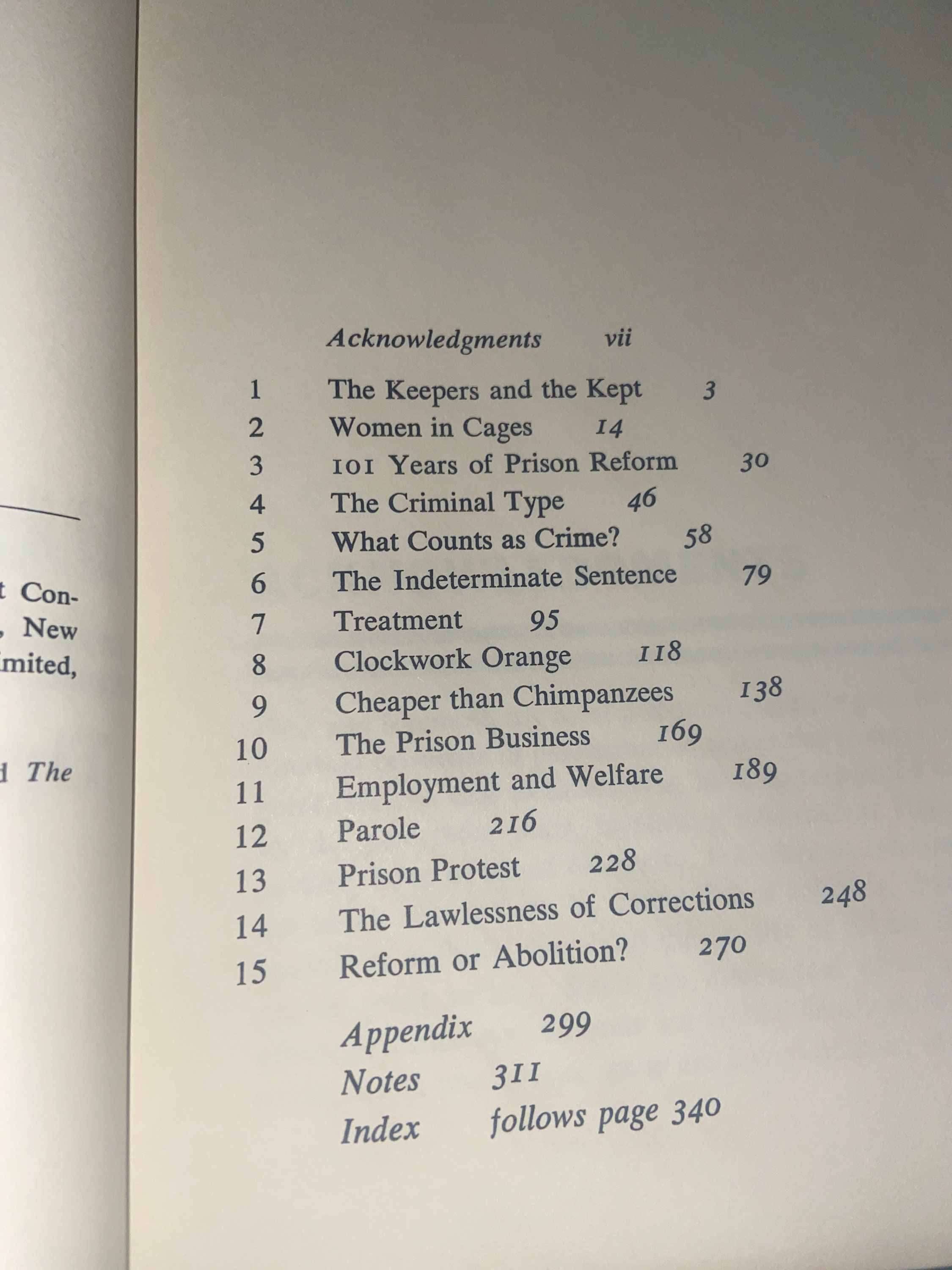
A booth with educational materials (Typing Office Orientation Lab), sits next to that of the American Bible Society (“Serving Correctional Institutions with Holy Scriptures”), which is next the display for a new tear gas grenade (it releases gas instantly “where it will do the most good”), and the Stun‐Gun Non‐Lethal Weapon System (“Hits the target with the immobilizing impact of a heavyweight fighter's knockout punch”). There is probably no better way to puncture the myth of prison labor as rehabilitative than to quote a laundry management official extolling the practice of convicts “sorting, folding, and stacking,” laundry because “it teaches good work habits, requiring team work.” And how better exemplify the basic contradiction in pretending both to treat and to punish inmates than to describe the exhibits at a correctional association convention. Refer to change as “reform,” but know that this is a term designed to get legislators to fund bigger prisons, increase the staff, obtain more sophisticated weaponry, and perpetuate the misery we now live with. Name their treatment “psychotherapy,” but realize that most prison psychiatrists are little more than administration spies. Describe offenders as “deviant” or “maladjusted,” but understand that we are talking about an inmate population that is overwhelmingly black or poor. Designate officers “institutional supperintendents,” but they are still Cagney‐like wardens.

You may call institutions “therapeutic communities,” but they remain hell holes. Her ironic title, “Kind and Usual Punishment,” prepares us for the illusory world of prisons.

So schooled, she was ready to investigate incarceration. In that encounter with the justice system, she learned about the most mysterious and shoddy doctrine in American law, the conspiracy charge. Spook and his four alleged co‐conspirators.

$7.95.Įxploring the American way of death (in a book of that title, dealing with the mortuary racket) helped sharpen her suspicion of official rhetoric and designations. We are all the beneficiaries of Jessica Mitford's unconventional (but extraordinarily advantageous) preparation for this book on American prisons.


 0 kommentar(er)
0 kommentar(er)
